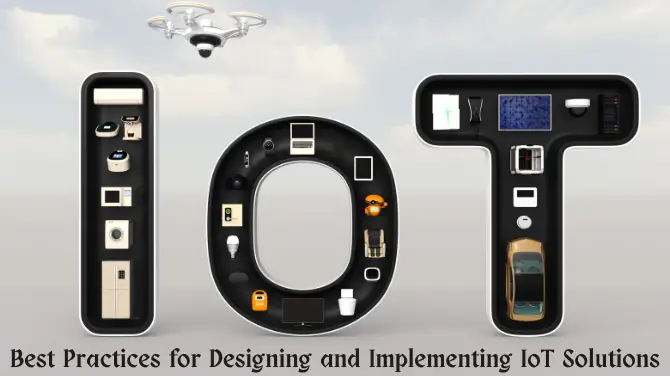As the world is advancing towards digitalization, the Internet of Things (IoT) is playing a significant role in the digital transformation of businesses. IoT is the technology of interconnecting devices over the internet and collecting data from them. It has a wide range of applications in different industries, including healthcare, agriculture, manufacturing, and transportation. However, designing and implementing IoT solutions can be a challenging task due to the complexity of the technology and the vast amount of data generated. If you wish to unlock the full potential of IoT and become a game-changer in the tech industry then I would recommend you to upskill yourself with the help of comprehensive, easy-to-learn, beginner-friendly, in-depth IoT tutorial. In this article, we will discuss the best practices for designing and implementing IoT solutions that can help overcome the challenges.
-
Define the Use Case:
Before starting the design process, it is essential to define the use case for the IoT solution. The use case should be specific, measurable, and achievable. It should address a particular problem or opportunity and provide a clear understanding of the benefits of the IoT solution. The use case should be based on the business requirements and objectives.
-
Choose the Right Hardware:
Selecting the right hardware for the IoT solution is critical. The hardware should be reliable, scalable, and cost-effective. It should also be compatible with the sensors, actuators, and other components used in the solution. The hardware should be able to handle the required data processing and storage. It is essential to consider the power consumption, connectivity, and security aspects while choosing the hardware.
-
Select the Appropriate Sensors and Actuators:
Choosing the appropriate sensors and actuators is crucial in designing an IoT solution. The sensors and actuators should be compatible with the hardware and provide accurate data. The sensors should be able to measure the required parameters, such as temperature, humidity, pressure, and motion. The actuators should be able to control the devices based on the data received from the sensors. It is also essential to consider the cost and reliability of the sensors and actuators.
-
Determine the Connectivity Requirements:
IoT solutions require connectivity to transmit data from the devices to the cloud or other devices. The connectivity options include Wi-Fi, Bluetooth, Zigbee, cellular, and satellite. The choice of connectivity depends on the use case, location, and network coverage. It is essential to consider the bandwidth, latency, and security requirements while selecting the connectivity option.
-
Ensure Data Security and Privacy:
Data security and privacy are critical aspects of IoT solutions. The data generated by the devices should be encrypted and transmitted securely to the cloud or other devices. The data should be stored securely and protected from unauthorized access. It is essential to have a robust authentication and access control mechanism in place to ensure data security and privacy.
-
Design the Data Analytics and Visualization:
Data analytics and visualization are essential components of an IoT solution. The data generated by the devices can be analyzed to derive insights and improve the efficiency of the solution. The data visualization should be intuitive and provide a clear understanding of the data. It is essential to select the appropriate analytics and visualization tools based on the use case and business requirements.
-
Implement the Solution in Phases:
Implementing an IoT solution in phases can help reduce the risk and complexity of the project. It is essential to identify the critical components of the solution and implement them first. The solution can then be expanded based on the business requirements and feedback from the users. It is also essential to have a testing and validation process in place to ensure the quality of the solution.
-
Provide User Training and Support:
User training and support are critical in ensuring the successful adoption of the IoT solution. The users should be trained on how to use the solution and interpret the data generated by the devices. The support should be available to the users in case of any issues or queries. It is also essential to collect feedback from the users and incorporate it into the solution.
Conclusion:
Designing and implementing an IoT solution requires a comprehensive understanding of the technology and the business requirements. Following the best practices discussed in this article can help overcome the challenges and ensure the success of the IoT solution. By defining the use case, selecting the right hardware, sensors, and actuators, ensuring data security and privacy, designing the data analytics and visualization, implementing the solution in phases, and providing user training and support, businesses can achieve the desired outcomes from their IoT projects. As the technology continues to evolve, it is essential to keep up with the latest trends and emerging technologies to stay ahead of the competition.







